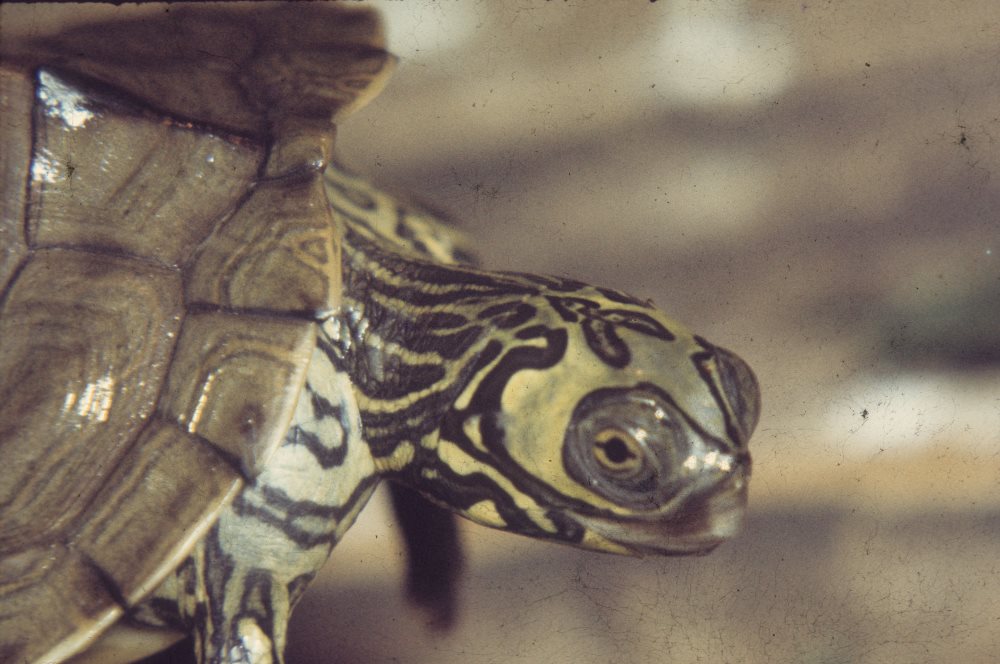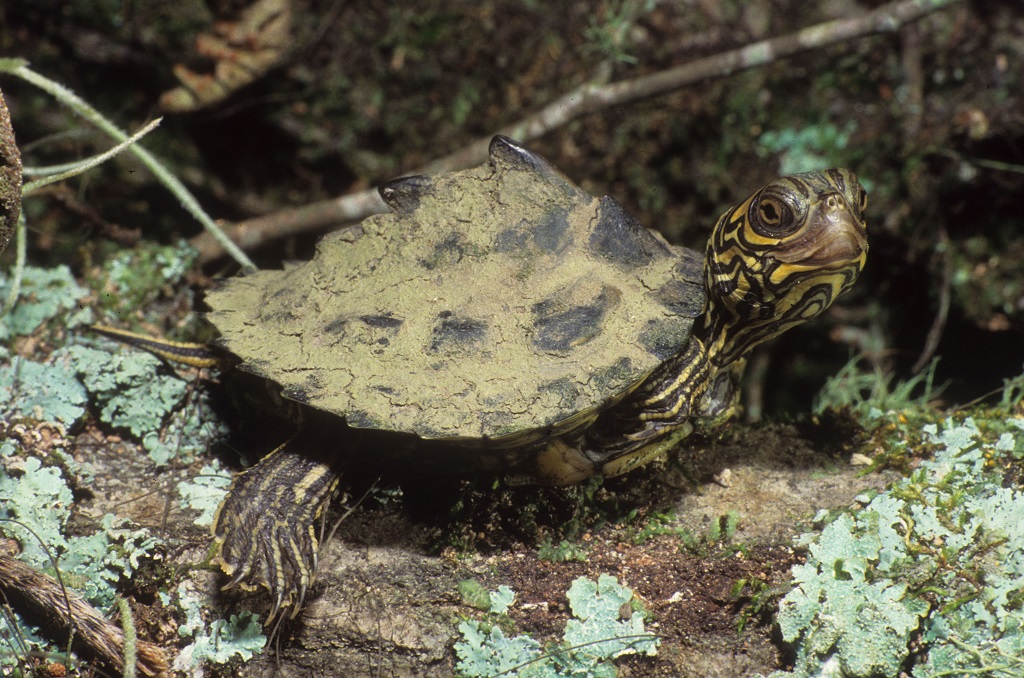
Young adult Barbour's Map Turtle
Back around 1960-something or the other, Patti and I used to take roadtrips much more frequently than we do today. As I think back, that was understandable because so much, including the various herps, was new to us. So we meandered from one end of the state to the other, and then westward to the 3rd end of the state, the Panhandle that reaches from Madison to Escambia counties. Somewhere along these craggy lines I began photographing again with the goal of depicting each and every amphibian and reptile that called Florida home. And and with that fixed firmly in mind, a beautiful dimorphic aquatic Panhandle turtle.caught my eye.
This was and is Barbour’s Map Turtle. It took only a few minutes research to learn that to do photographic justice to this persistently aquatic turtle would require pics being taken of 3 stages in its life, a hatchling, an adult male, diminutive though these may be, and a hulking adult female that, when fully grown is more than twice the size of the males. To apply a measurement to carapace sizes, hatchlings are about 1 ½ inches, adult males are about 4 ½ inches, and adult females are about 12 inches, impressively notable differences.
To shorten an unwieldy tale, hatchlings and males were easily photographed. It took only a couple of slow and enjoyable canoe rides, stopping here and there at submerged or protruding snags to take the “needed” pix. But the adult females were another several stories. Over the years Patti and I tried and failed. 4 decades rolled on by. 20 years ago Carl May and I tried. Again, failure. Now here we are in 2024 and I’m going to try again—this time with Jake..
And, because of unexpected flooding we almost failed again. But at the last stop Jake came through. He spotted a single female, way downriver, clambered down an 8 foot vertical drop, and took pix for both him and me-----and you. .Thanks, Jake.
Adult male Barbour's Map Turtle.

Hatchling Barbour's Map Turtle. Because of the pronounced vertebral keel these are also referred to as Sawbacks.




